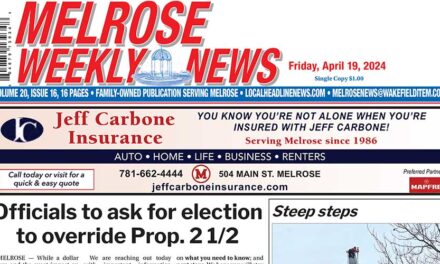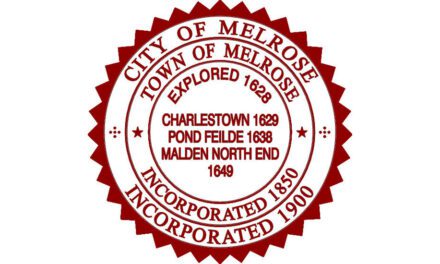Published in the August 10, 2018 edition
MELROSE — The city, like just about every community in the immediate area, has a rodent problem.
This week, officials beat the informational drum as they continue to handle calls regarding rodents seen all over Melrose. The rodents are mostly rats, and according to Health Director Ruth Clay, the population of those pests is exploding not just around here but across the country and the globe.
Clay said “no one knows why” the earth’s rat population is getting so big, and no one seems immune from dealing with an increase in rodents. Not even Melrose City Hall.
The property in and around Melrose’s main municipal building has seen a rodent infestation, particularly out near the rear of the parking lot behind City Hall, Memorial Hall and fire headquarters.
For city-owned property, Melrose has a contract with a licensed pest control company which makes monthly inspections and deals with any rats when needed. The DPW is scheduled to cleared out brush near the back of the municipal lot at City Hall and the pest control contract will deal with the burrows.
If residents are dealing with the same thing, they are urged to contact a licensed pest control company to get rid of the rodents. There are also certain steps residents can take to control what happens near their homes.
“It’s a neighborhood issue,” Clay continued, adding that when someone complains of a rat problem in a specific area, flyers are sent out to all neighbors explaining what can, and should, be done.
A city-wide meeting was held in City Hall on July 19 to provide information, and health officials have met with other residents as well. In all instances, Clay said of the Health Department’s staff, “We’re here to help.”
On the city’s website, there is a list of tips on controlling rodents around your house.
Here is that release:
“Our Animal Control office has received several calls lately about rodents and other wildlife pests, so I asked them to provide us with a few guidelines for basic animal-proofing as well as longer-term measures.
“With basic animal proofing, you should secure any trash you keep indoors or outdoors in firm garbage bags or containers (with fitted lids!). Be sure to not leave your trash outdoors for long periods of time before or after the garbage pick-up time.
“A disorganized space tends to attract wildlife because it provides food and shelter. To reduce clutter, discard any unused materials such as, boxes, yard waste, and trash. Along with eliminating shelter and hiding places, get rid of any weeds in your yard, and cut the grass consistently. Trimming the bushes and the trees on your property will also reduce the threat of rodents because it reduces potential shelter.
“Many people overlook the small steps they can take to check and rodent-proof their houses. To make sure your house is rodent- free, take a look at these simple, yet effective, suggestions.
• Check your basement for any small holes or cracks. Rodents can enter houses through the smallest of holes in this area. If you do find one, you can seal it with mortar or plaster
• Rodents and other wildlife can gnaw their way through wood. Use concrete for any repairs you make to the basement’s foundation or floor.
• Screens on the windows are a very important factor in safety from any sort of wildlife. Sheet wire mesh is a sturdy material that can be used to stop rodents and other animals from gnawing their way into your home
• Use sheet metal frame and metal guards on all points of entry (openings on vents, windows, pipes, wires)
• Keep all outside doors shut, and secure the area beneath the doors with a metal trim, concrete, or plaster
• Don’t leave waste, pet food, or any source of water outside or accessible to animals
• In the kitchen, seal up all your food in glass or metal containers with a secure lid.
• Don’t store food in the lower cabinets
• Clean up any crumbs or food off of the tables and counters
“Harborage, shelter for wildlife, is a large factor in the increase of wildlife and rodent population. Harborage provides a favorable spot for wildlife to have shelter, and breed. These are some of the places to keep an eye out for.
• Abandoned vehicles: if the vehicle is on private property, the property owner is responsible for the removal of the vehicle
• Abandoned buildings: should be boarded up properly
• Abandoned appliances: washing machines, refrigerators, stoves, and dryers should be disposed of properly
• Trash cans: as mentioned above
• Lumber: stack your lumber 12 to 18 inches above the ground, away from walls or fences




